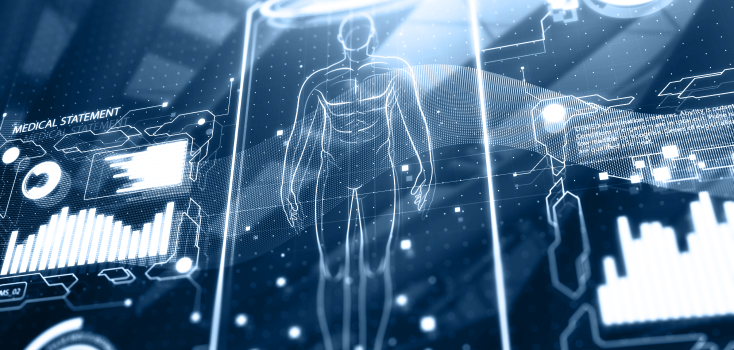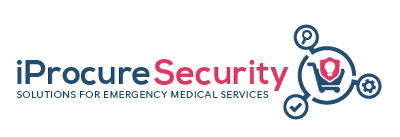
Emergency Medicine: The future will involve exiting new technologies
A.I. is already improving our lives in many ways – from driverless cars to automated product recommendations. This development now increasingly affects the healthcare sector and EMS. In this regard, we will have a look at how those technologies are influencing emergency care and what lies ahead.
In Europe, emergency care primarily happens on the scene – medical doctors supported by paramedics will treat patients on the scene of an accident before bringing them to the hospital or on the go. However, in the case of the Anglo-American model, fewer patients are treated on the spot and are instead transported to the emergency room as fast as possible. This can create problems, as a homogeneous model would be preferable to different approaches to coordination. However, new technology should remedy this situation:
A.I for logistics and capacity allocation
A.I. is used already for logistics and capacity allocation in its day-to-day operation. Smart algorithms are the logical solution to mine data for predictions – as currently an immense amount of data from the thousands of daily cases is generated. In addition to that, A.I. can predict the statistical probability of accidents on roads which allows a better possible starting point for future operations
Planning of daily capacity allocation within countries is another important aspect, where vehicles can be easily deployed to neighbouring areas, where capacity peaks are experienced.
Supportive video games
Also, gaming features are merging in digital health and can therefore positively influence emergency medicine: The Canadian start-up Level Ex develops mobile video games to train medical professionals. As an example, their Airway Ex app simulates real cases and therefore offers realistic scenarios for doctors and paramedics to better prepare for challenging airway management. The game is able to track the scores of the paramedic, as well as his errors – while the procedure takes place. The game is highly mobile and can be used anywhere – on the subway, at home or on the Bahamas during holidays.
Apps for emergency care
Miscommunication between medical staff can be the reason for up to 80% of clinical errors. In emergency care, such errors should be minimised as much as possible – new software programmes can help: A new platform was developed by the U.S Company Pulsara to improve ambulance and emergency management. The mobile app allows paramedics to alert an emergency department before arrival with the patient and prepare beforehand. It is calculating the estimated time of arrival based on GPS but also allows the paramedics to share important details like the ECG or images from the field.
Another example is the free app, Full Code Pro. It is a real-time CPR event tracking tool, allowing users to document critical interventions. With a single tap, first responders can log administered medication, start a countdown and even have access to a metronome to optimize chest compression rhythm. The documentation collected can later be reviewed so that the team can learn from the collected data as well.
As the last example, the app “Szív City” was introduced in Hungary. The app alerts volunteer users of any street resuscitation event within 500 meters of their location. This will save precious time, having volunteers on the spot to perform CPR until an ambulance arrives.
Driverless ambulances
However, not only the emergency sector will be improved: As one example, the lack of proper transportation is a significant barrier to access to healthcare worldwide. In this regard, companies like Uber have launched services for non-emergency medical transportation. They to help patients reach hospitals in a secure and reliable manner.
The development of driverless cars holds the potential to turn cars into points-of-care: These ambulances would work as “medical taxis”, pick up low-risk patients and transport them to the nearest hospital or clinic for treatment.
Portable diagnostic devices
Smaller, portable and user-friendly diagnostic devices make it easier and faster to treat a patient on the spot. This can include ECG, ultrasound or laboratory testing. In that, physicians can almost carry a department’s worth of diagnostic tools with them.
Today, emergency medical specialists have the opportunity to use bedside point-of-care ultrasound devices (PoCUS) to answer some yes-or-no questions such as intra-abdominal bleeding. As an example, handheld ultrasound devices such as the Clarius and Philips Lumify allow doctors and first responders to easily assess a critically ill patient, no matter where they are.
Medical drones
Drones are more and more used to transport medical supplies, whether it be vaccines, drugs or medical aid. This is already the case in Rwanda, where a medical drone company delivers medical supplies to hospitals via drones as part of the local healthcare system. This method enables healthcare facilities to receive emergency blood packs within minutes, instead of hours.
Another potential for drones in the emergency care setting is to deliver automatic external defibrillators (AEDs) directly to people who have just suffered a heart attack or give instructions to bystanders. They can also allow the dispatch team to give feedback via its own video connection.
EMS in the future
Digital technologies will not only support emergency care units to handle situations more safely and more confidently but also help patients receive care more quickly and in a more efficient manner. With the widespread adoption of A.I and ICT, EMS patients can receive assistance in a timely manner that wasn’t possible before.
In this manner, the future of emergency services could be more streamlined and data-based, but also more efficient and faster – by taking the needs of the patient and the limitations of caregivers into consideration.

